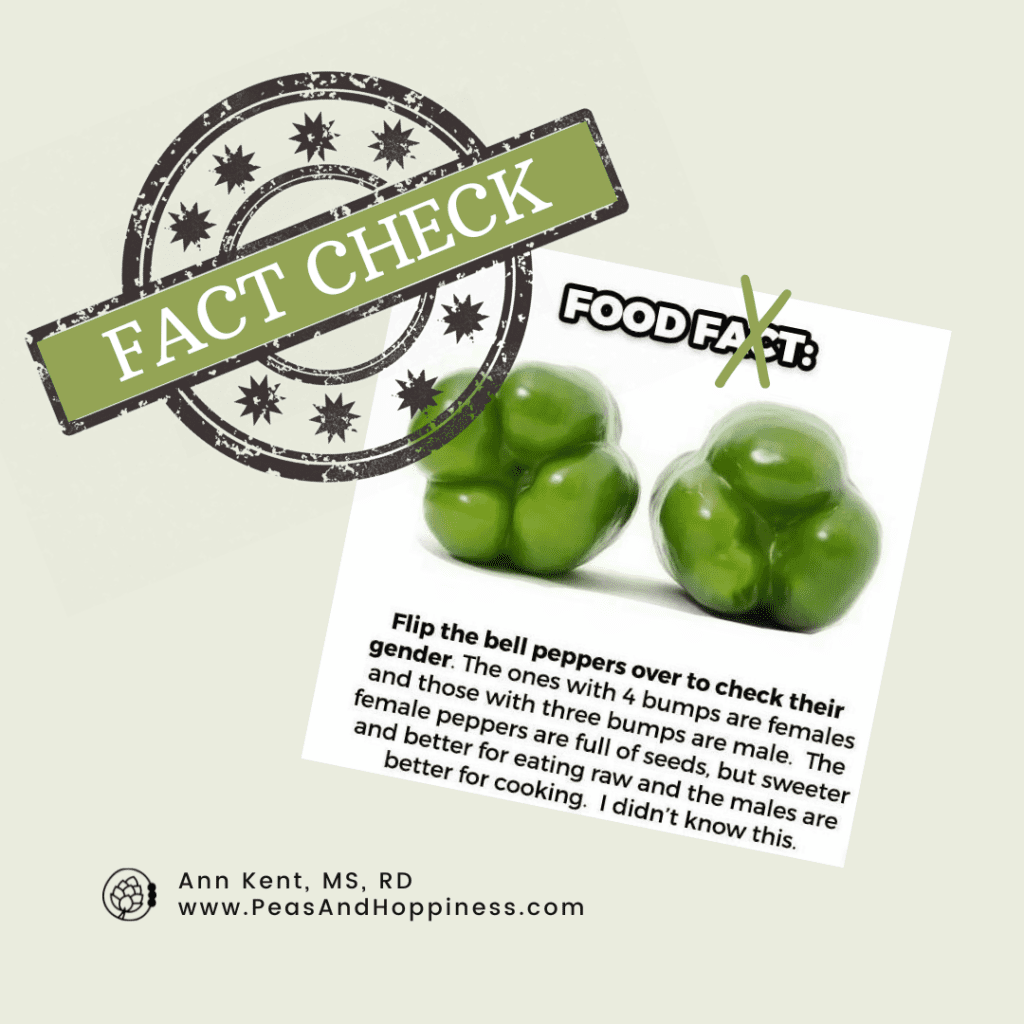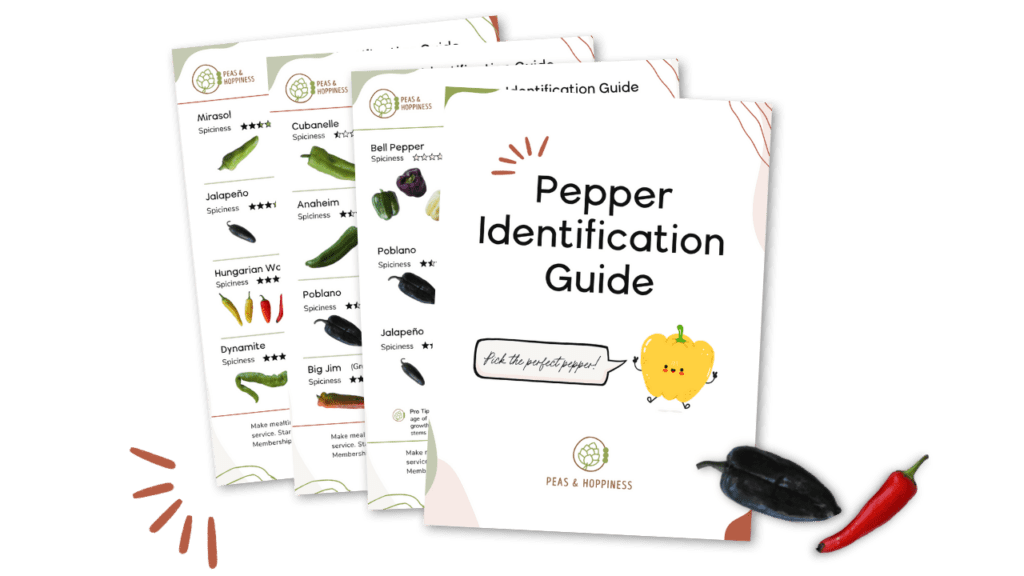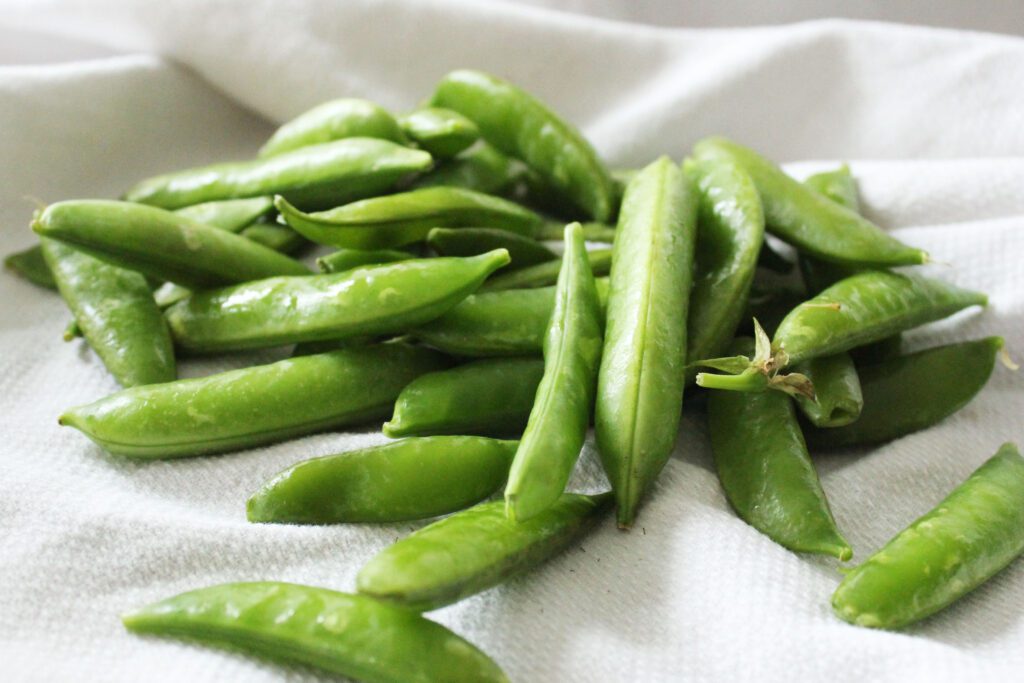How do you know when a pepper is ripe? How do you store peppers? Learn all about bell peppers and how to cut and prepare any type of pepper for your next dish.
If you partake in picking a peck of peppers, you probably prefer the peppers to be perfect for picking.
I’m here to help with that! And no more alliterations, I promise.
How to Choose a Perfect Pepper: When is a Pepper Ripe?
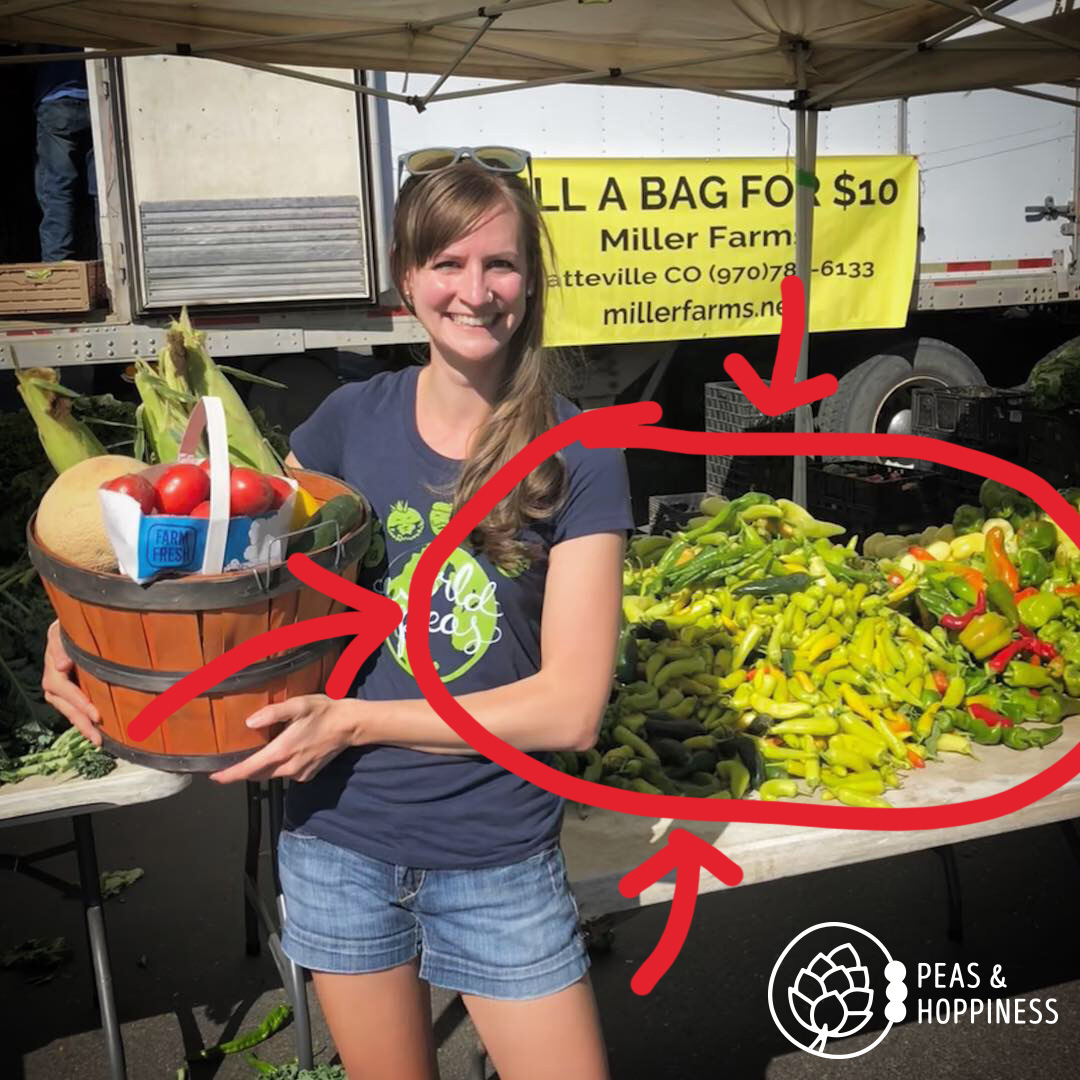 The perfect time to pick a pepper from the vine depends on what color you want it to be.
The perfect time to pick a pepper from the vine depends on what color you want it to be.
Different varieties of bell pepper plants mature into different colors. Fully matured bell peppers can be red, orange, yellow, purple, white, green, and even brown.
The underripe version of a bell pepper is the kind we eat most often: the green bell pepper. Any of the colorful pepper varieties can produce green bell peppers by picking the peppers before they fully mature into the color of the variety planted.
How to Choose a Perfect Pepper: Which Color of Bell Pepper Should You Use?
Because they’re not fully matured, green bell peppers tend to have a more grassy, bright, and bitter flavor. Green bell peppers are less expensive in the grocery store because they’re picked earlier in the growing process and so take less time to produce.
Red and white bell peppers taste the sweetest, followed closely by yellow and orange varieties. Yellow and orange bell peppers can either be a separate plant variety or may be a red bell pepper picked before it fully matures.
Pepper Fact Check
a popular meme circles the Internet occasionally, claiming the number of lobes on a pepper indicates whether the pepper is gendered a male or female – which then would explain something about the pepper’s flavor profile and number of seeds.
This is not true, however. All peppers grow from flowers which contain both male and female parts. Flavor and seeds have more to do with how the pepper was grown and its maturation level.
How Can You Tell if a Bell Pepper Has Gone Bad?
It’s easy to tell if a bell pepper is past its prime. The pepper’s skin becomes wrinkly and the flesh of the pepper becomes soft.
If there is visible mold around the stem, you can trim this and use the rest of the pepper. A pepper past its prime will be better to use for cooking rather than eating raw because the texture will have degraded significantly.
Throw out a pepper with signs of mold throughout, if the flesh is very soft and flimsy, or if has an “off” odor, or is slimy inside. This pepper can’t be salvaged.
When Are Peppers in Season? What Time of Year Are Peppers Ripe?
Peppers are in season during the hot summer months. In most areas they ripen in July and the season ends sometime in October.
Pepper plants are very sensitive to cold. This means after the first freeze in your local area, the peppers in the grocery store will come from a greenhouse or shipped from a warmer climate.
How to Store Peppers to Keep them Fresh and Crisp
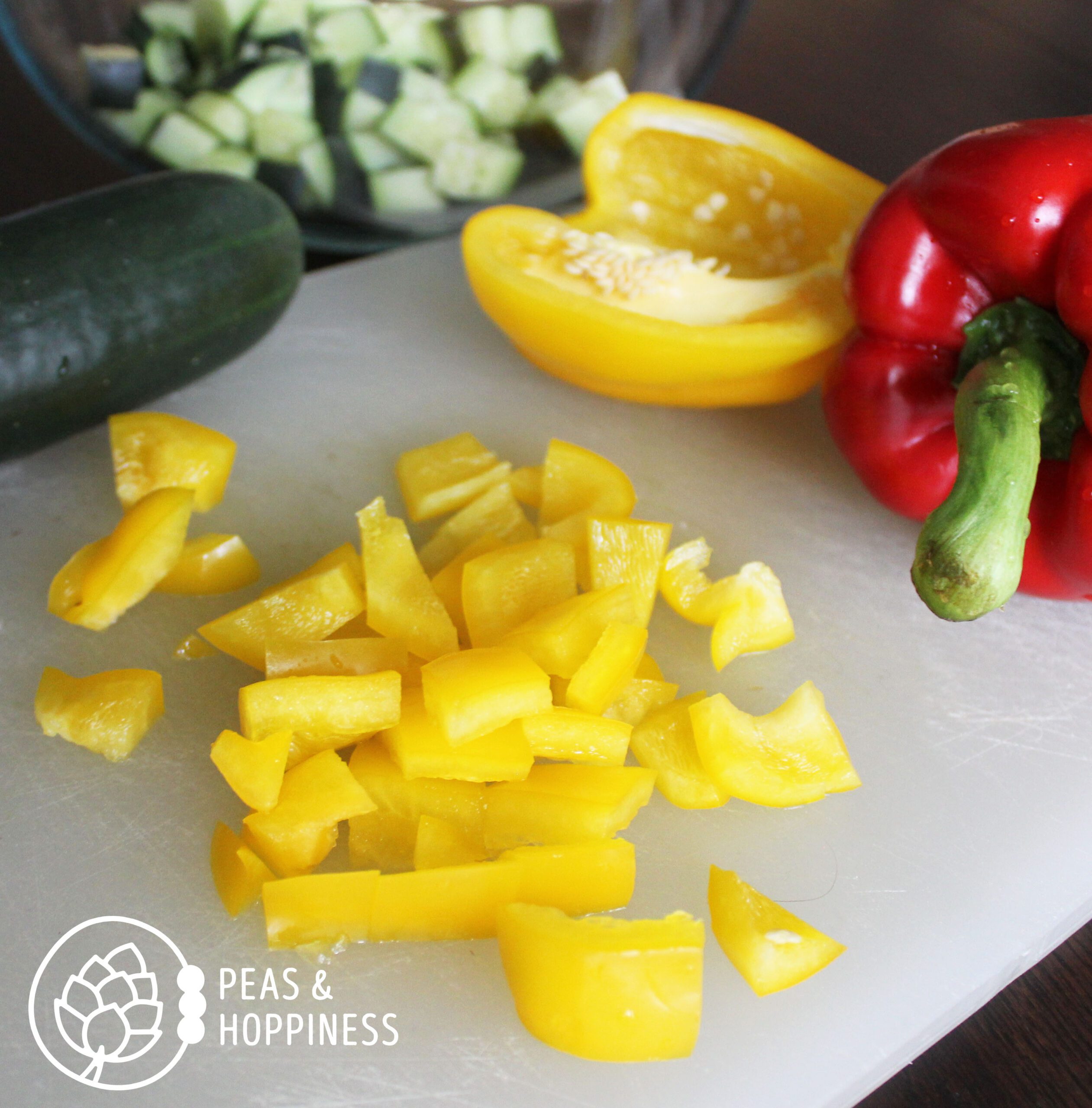 Store fresh peppers dry in the crisper drawer of the refrigerator up to two weeks.
Store fresh peppers dry in the crisper drawer of the refrigerator up to two weeks.
If you wash the peppers before storing, make sure they’re completely dry or wrap in a paper towel to absorb excess moisture and prevent molding.
Blanch and freeze peppers for long-term storage. First, remove the seed pod from the pepper. Blanch peppers by boiling in water 2-3 minutes and then submerging in an ice bath OR skip this step and freeze peppers from fresh. Remove as much air from the container or bag as possible before freezing.
Frozen peppers can be used in cooked dishes, but the texture quality will degrade and so are not good to eat raw.
How to Prep a Pepper: Seeding, Halving, Slicing, Dicing, and Mincing
All varieties of pepper have a similar anatomy, so their preparation is similar. Peppers have a fleshy outer shell – the part we eat – with a stem in the center which holds a pod of seeds.
Contrary to popular belief, the seeds of peppers are not spicy because they don’t contain any capsaicin. Sometimes oils from the peppers can leave a residue on the seeds which may cause them to appear spicy. Seeds tend to taste bitter, so I recommend to discard them.
Pepper Prepping Pro Tip
Capsaicin, the chemical in peppers that makes them taste and feel hot, can stay on your skin for a long time! Wear gloves when preparing very spicy peppers to prevent the capsaicin from burning your fingers.
Always wash your hands with soap and water immediately after preparing hot peppers and never touch your eyes or other sensitive areas during or after hot pepper preparation.
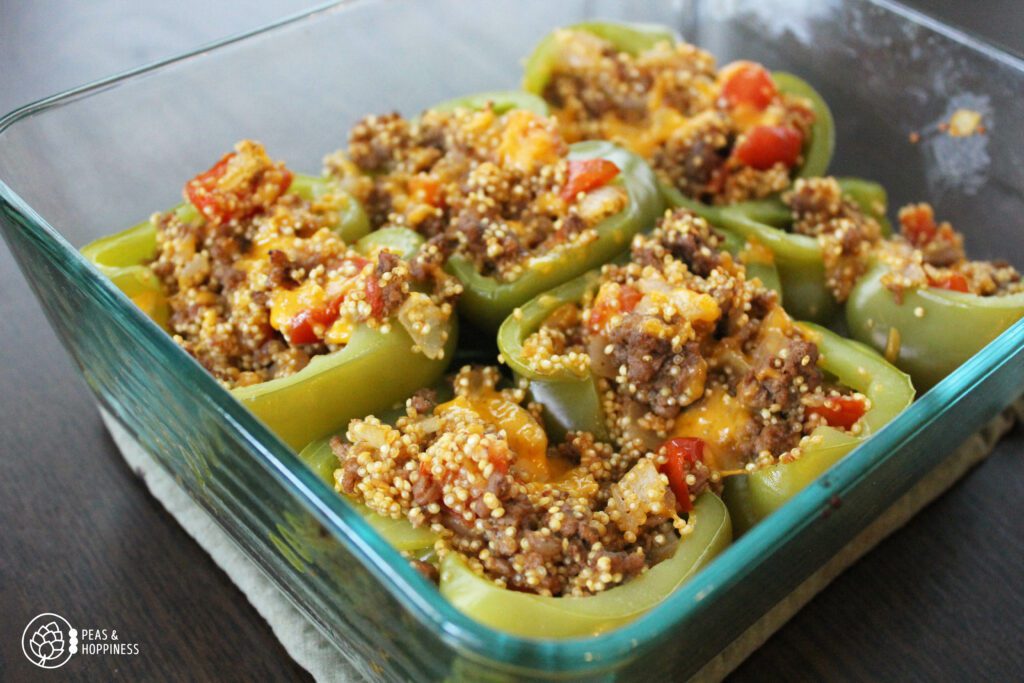
How to Seed a Bell Pepper
Use a paring knife to cut around the stem, cutting through membranes on the inside of the pepper. Pull the seed pod out by the stem and discard.
How to halve a bell pepper: how to cut a bell pepper in half
Cut the pepper in half lengthwise from top to bottom, leaving the stem intact. With a paring knife cut around the stem to remove. Remove seeds and white membranes along inside of pepper.
How to slice a bell pepper: how to cut a bell pepper into slices
With a paring knife, cut around the stem, then cut pepper in half lengthwise from top to bottom. Remove seed pod, seeds, and white membranes along inside of pepper. Slice lengthwise into 1/2-inch wide strips.
How to dice a bell pepper
With a paring knife, cut around the stem, then cut pepper in half lengthwise from top to bottom. Remove seed pod, seeds, and white membranes along inside of pepper.
Slice each pepper half lengthwise into 1/4-inch wide strips, then turn a quarter-turn and slice perpendicular to dice.
How to mince a pepper
Typically you’ll mince hot peppers like jalapenos to use in a recipe. To mince the pepper, first remove the stem and seed pod and discard.
Cut pepper in half lengthwise. Use a paring knife to remove stem, seeds, and white membranes along inside of pepper. Slice each pepper half lengthwise into very thin strips, about 1/8-inch wide. Turn a quarter-turn and slice perpendicular to dice very finely.
Watch: All About Peppers - Demonstration of How to Pick a Pepper and Preparing a Bell Pepper
Nutrition Benefits of Bell Peppers
Like other vegetables, peppers contain lots of vitamins and minerals, but not many calories. Don’t discount peppers as a “diet food” – they’re a powerhouse of nutrition!
All pepper varieties contain similar types of nutrients. In general, red bell peppers contain more nutrition than their green counterparts because they’ve fully matured on the vine.
Peppers Are Good for Digestive Health
Peppers contain about 9 grams of carbohydrates per cup, 3 grams of which is fiber. This very high fiber content means peppers are excellent for digestive health and stabilizing blood sugar and energy levels.
Peppers Are High in Vitamins and Minerals
Peppers are an excellent source of vitamins A and C, with red bell peppers containing about twice the amount of Vitamin C and upwards of 10 times the amount of Vitamin A compared to green bell peppers.
Peppers are a good source of Vitamins E, B6, and folate and also contain vitamin K, potassium, and manganese.
Peppers Are Full of Antioxidants and Phytonutrients
Look at the color of the pepper and you’ll see the phytonutrients!
Red bell peppers contain carotenoids such as lycopene, beta carotene, lutein, and zeaxanthin. These antioxidants have been shown to reduce the risk of certain types of cancers, eye disease, and improve heart health and immune function.
Like other nutrients, the benefit of these antioxidants comes from consuming plants. Taking a supplement of these has not been shown to have the same benefits.
Capsaicin: What Makes a Spicy Pepper Hot? Is Capsaicin Dangerous?
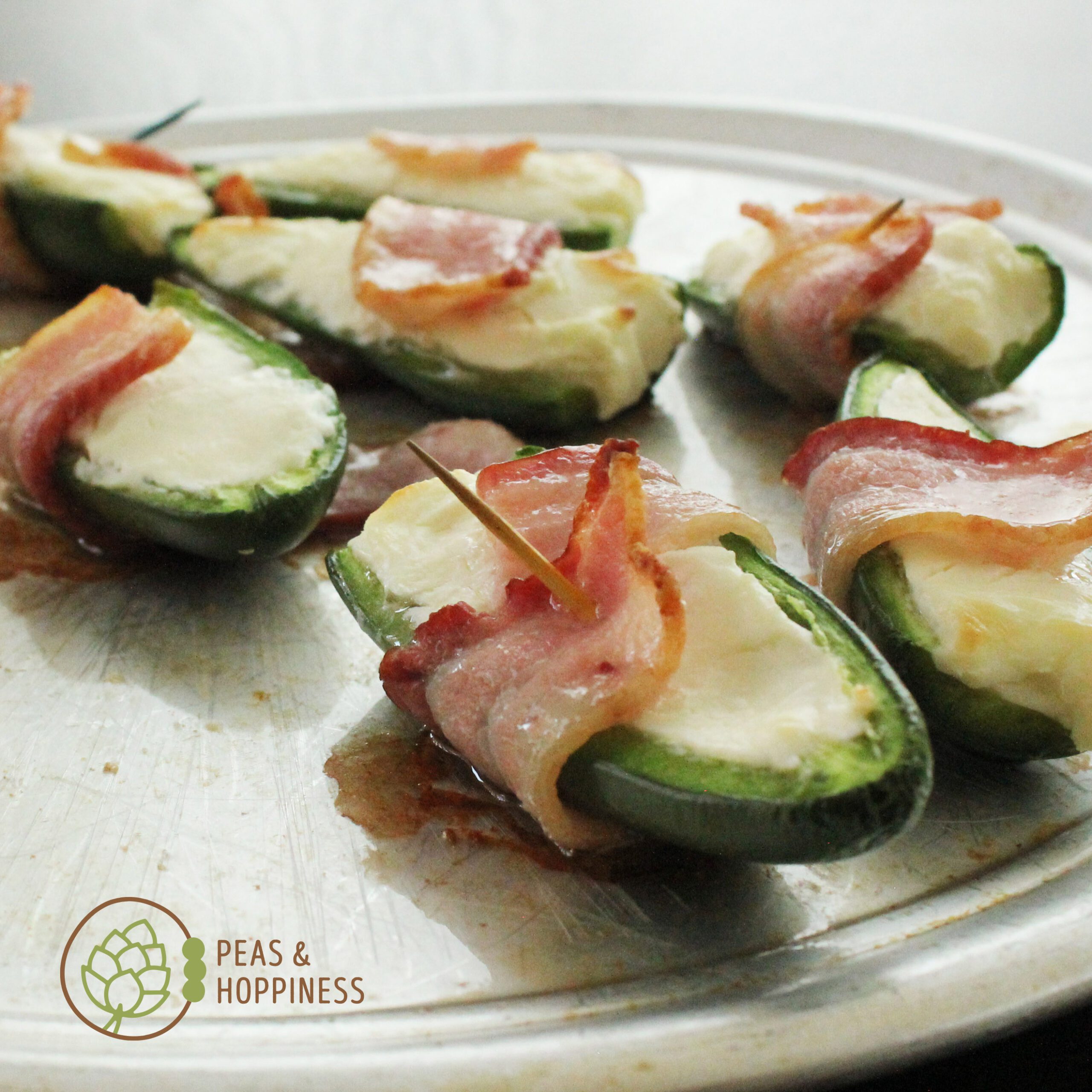 Capsaicin is a natural chemical found in peppers. It stimulates pain receptors, giving the sensation of burning, but it doesn’t cause any physical harm.
Capsaicin is a natural chemical found in peppers. It stimulates pain receptors, giving the sensation of burning, but it doesn’t cause any physical harm.
The amount of capsaicin in peppers is measured using Scoville Heat Units. The higher the number, the spicier the pepper.
Even though a hot pepper isn’t technically causing damage to the body, the body responds in a very real way to the pain.
Please don’t attempt to eat a ghost pepper at home (or anywhere else)! At best you’ll be miserable. At worst you’ll experience a similar response to if you ingested a caustic substance.
Is Capsaicin Good for You? What Are the Health Benefits of Capsaicin in Peppers?
In addition to the traditional “hot pepper” flavor, capsaicin has been found to produce a wide variety of health benefits. These benefits come both from ingesting (eating) the substance and using it as a topical ingredient.
Can capsaicin from peppers help you lose weight?
Capsaicin has been associated with raising a person’s metabolism. It can increase body temperature a small amount, so it has been studied for its potential weight loss benefits.
Can capsaicin from peppers help prevent cancer?
Capsaicin has also been reported to reduce risk of some types of cancer and has been studied as a potential treatment for prostate cancer.
How is capsaicin from peppers used as a topical cream?
The medical use of capsaicin is perhaps best known as a topical cream used to reduce arthritic inflammation, back pain, and sometimes even pain caused by diabetic neuropathy.
Happy Summer Pepper Picking!
I hope you enjoy peppers this season, knowing how delicious and nutritious they are!
Which type of pepper is your favorite? Drop a comment and let me know!
Happy pepper prepping!
Dietitian Ann from Peas & Hoppiness
Which Type of Pepper Should You Use?
Download this free Pepper Identification Guide which reviews the spiciness level, flavor, and uses for eight common pepper types.
Enjoy Seasonal Vegetables Year-Round
For the freshest, most nutritious vegetables in every season, download this free Seasonal Vegetable Guide.
From summer to winter, you’ll always enjoy the best produce available!
